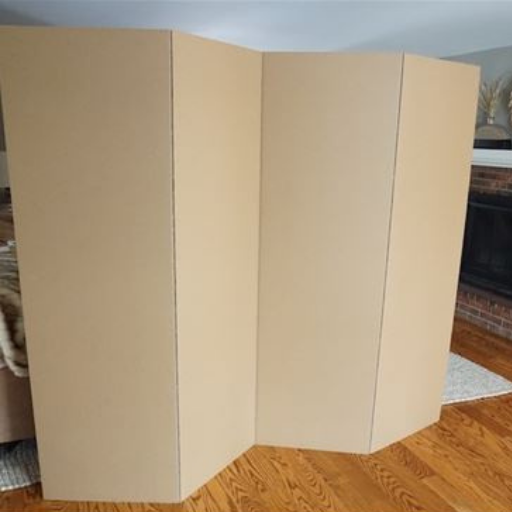Affordable ways to improve attention and listening with comprehension while creating learning opportunities at home and at school.
An Unfriendly Acoustic Environment
An unfriendly acoustic environment increases sound intolerance, because sound bounces off reflective surfaces instead of being absorbed. Reflective surfaces like windows, glass, ceramic counters, and tile floors distort sounds. Distorted sounds contribute to auditory fatigue, shorter attention spans, and decreased comprehension while listening. Room acoustics vary depending on the total square footage of the room and what is in it.

Subscribe to Moore Auditory Training!
Get simple activity ideas and tips for learning through play in early childhood delivered straight to your inbox.
Affordable Ways to Improve the Acoustic Environment
Improve attention and listening in your home and classroom’s acoustic environment. A room where sound bounces fatigues the auditory system resulting in sound intolerance. When you improve acoustics, you improve listening. Improve sound tolerance and listening with the following ideas:
- Turn on ceiling fans and floor fans to disperse sounds
- Cover windows with sound-absorbing materials
- Student’s work
- Sheer curtains that let the light into the room
- Blinds, adjust slates while listening to your voice
- Does sound need to bounce up towards the classroom ceiling tiles or down towards a carpeted surface?
- Cover tile floors with large area rugs
- Hang colorful swaths of fabric from ceiling tiles
- Create a beanbag area large enough for a tall bookcase filled with books
- Alternate books stored out of reach with the lower books
- Display books by placing them on plate display holders
- Activity corners with toys and books absorb sounds
Felt Story Boards For Creative Storytelling To Improve Listening
Using felt story boards is a great way to capture your students’ attention and also tell a story in a friendly acoustic environment. The materials used to tell the story help absorb some of the sound waves bouncing around the room. This helps improve attention and listening with comprehension.
How to make a Felt Story Board
Cover a large piece of cardboard entirely with felt. Then use glue or staples to secure the felt in place. If you are going to hang it up or prop it up against a wall, a flat piece of cardboard will work. To make a free-standing storyboard, create a triangle structure with the cardboard.
I love to use felt storyboards to teach about the main character, setting, plot, etc. When I create my felt characters, I store them in a folder or bag that I can attach to the back of the board so my students can easily access them.
Create an Activity Center Station
Supplies: tall cardboard room divider, clear contact paper; velcro, folders with velcro on the back, folder activities
These tall dividers are a great way to increase your wall space to hang up interactive activities and put sound-absorbing materials in your classroom. If possible, utilize both sides of the divider or place it along a wall.
Activity Ideas to Improve Attention and Listening:
Vocabulary Picture Matching Game
You can use printed images and words that have been covered in clear contact paper on the board. Then simply attach Velcro to the objects and the board to create a fun matching game to increase comprehension.
Stick On Preposition Game
Place a large image of a tree with a tree fort and or swing on the divider. Strategically place Velcro in spots for preposition words to go. Laminate printed preposition words such as in, around, under, behind, etc., and place Velcro on them. Students can stick the preposition words to the picture and tell or write a story about their picture using prepositions.
How to Make an Acoustic Panel
Acoustic panels absorb sound and can also serve as an activity center in a classroom.
Supplies: two-to-four-inch-thick wood, Styrofoam or corkboard, and thick fabric material. Cut material of choice into geometric shapes or anything educational.
Directions: Glue styrofoam or corkboard to one side of wood making it easy to attach and remove photos, etc… Wrap wood with thick fabric material covering all sides. Hang with the wood side against the wall and Styrofoam side facing out into the room about the height of your students. Styrofoam, material, and wood all absorb sound which helps improve attention and listening with comprehension.
Top Recommendation by Researchers to Improve Attention and Listening
The number one recommendation to improve listening skills for your students or children is to speak slower. When you slow down your rate of speech, sounds become more pronounced and clear. You also give the brain more time to process information. New information must be assimilated into existing knowledge and experiences for memory development.
Professor Ray Hall teaches Communication Sciences and Disorders at Wichita State University. In his studies, he found that teachers tend to speak 150 to 160 words per minute, which is significantly faster than children, preschoolers, and even teenagers are able to cognitively process while listening.
- Preschoolers and children through third grade are able to process speech and language at a rate of 120 words per minute.
- Fourth graders are able to process speech and language at a rate of 124 to 128 words per minute.
- Sixth through eighth graders processed speech and language at a rate of 135 words per minute.
- Ninth graders and older typically processed speech and language at a rate of 145 words per minute.
Think about the rate of speech on preschool television shows such as Blues Clues and Mr. Rogers. These characters spoke at a slower rate which allowed the audience to listen with comprehension. Professor Hall shares that slower speech improves comprehension and recall, learning.
A Teaching Memory
When I resumed teaching, I understood the effects of sound intolerance on a student’s ability to listen and learn. I taught kindergarten and first-grade students who spent the majority of their day in my resource room. One of my student’s behavior told me he either had hearing loss or significant sound intolerance. He was unable to learn during group instruction and when other students were in the classroom. I noticed he had to look at my face despite his need to look at the worksheet while receiving directions. I understood he was lip-reading. Thus, I provided instructions twice. Once, with him looking at me. Then, again while he was looking at a worksheet or manipulative. I always used one or more manipulatives to illustrate the lesson. Thus, during group instruction, I had him help me illustrate the lesson. I taught him one-on-one while the class quietly observed him learn.
I tell you
I show you while you tell me
I tell you while you show me
You tell and show me by yourself
Students with auditory challenges and visual challenges have to choose to either just look or just listen. Those with sound intolerance unconsciously depend on reading lips. Thus, they will listen and then look at their worksheet, manipulatives, or the board. When confused, they will observe others and if needed, look at the first answer on their fellow student’s worksheet. These students develop excellent analytical skills. Rarely will they ask questions, because they do not know what to ask.
Important Habits for Teachers and Parents
Improve attention and listening with comprehension by looking at who you are speaking to
When your face is turned away from your students or child, it is more difficult for them to hear you. Remember to speak slowly while looking at your students or child.
If you need to write on the board, then pause your instruction. Give the students something to think about before you turn around to write on the board. Resume instruction once you face students. Ask for a helper to point at something on the board or manipulate instructional materials. This will allow you to check for understanding and motivate students to listen and learn.
Competing background noise covers up your speech
Teachers, I encourage you to pause instruction when noise levels increase outside your door. Purposely practice with students what they can do when you have to stop teaching. Ideas: study, journal, read a book, etc…
Parents, I encourage you to teach in a room that absorbs sound and is quiet. Sounds you may need to eliminate depends on where child completes their schoolwork:
- Dishwasher
- Washer and dryer
- Icemaker
- Television
- Cooking and chopping food
In conclusion, speaking at a slower rate helps improve attention and listening for all ages. By communicating at a slower rate of speech, it makes your tone and body language more relaxed. You become more approachable to your students. When you allow time for comprehension, not only will you see improved attention and listening; you will also see improves self-confidence, self-esteem, and emotional health.










0 Comments